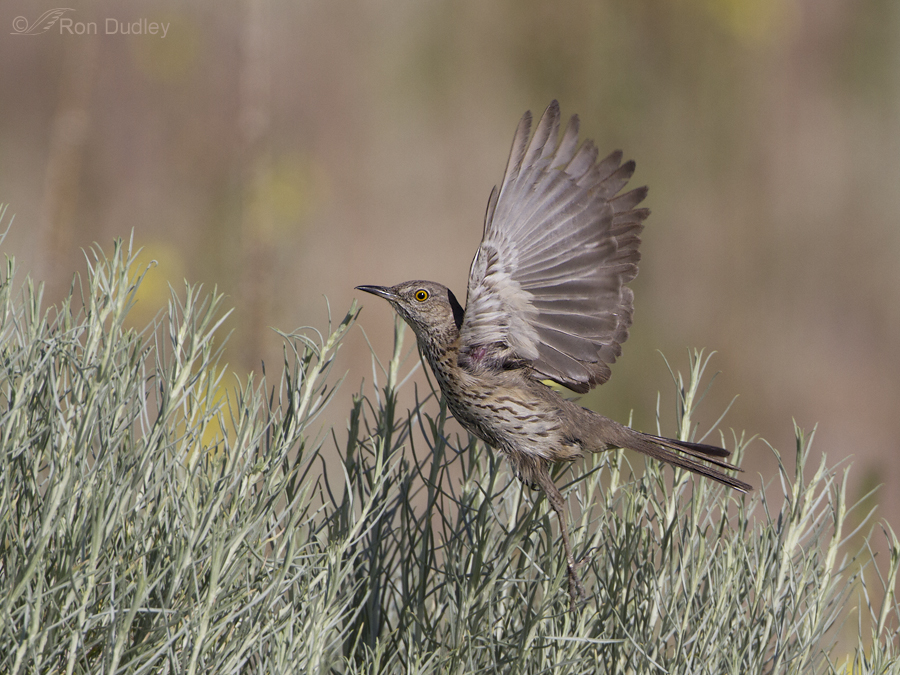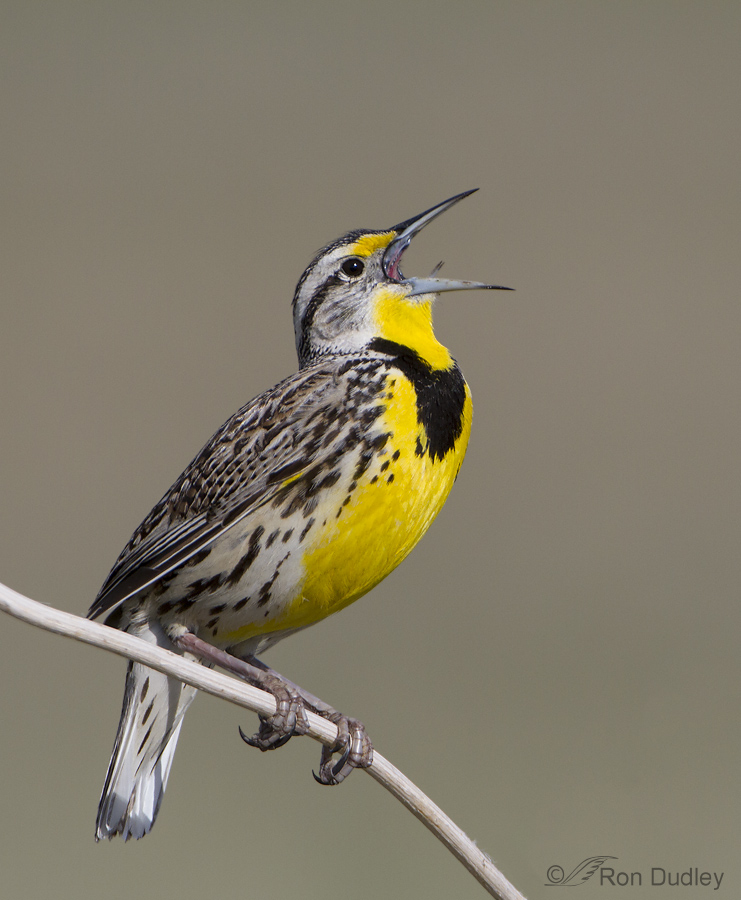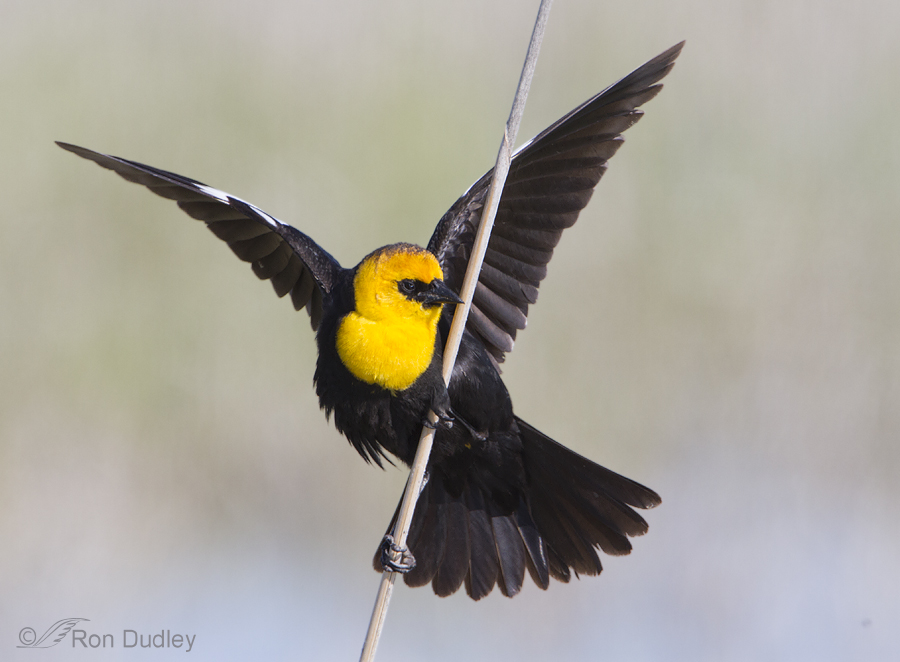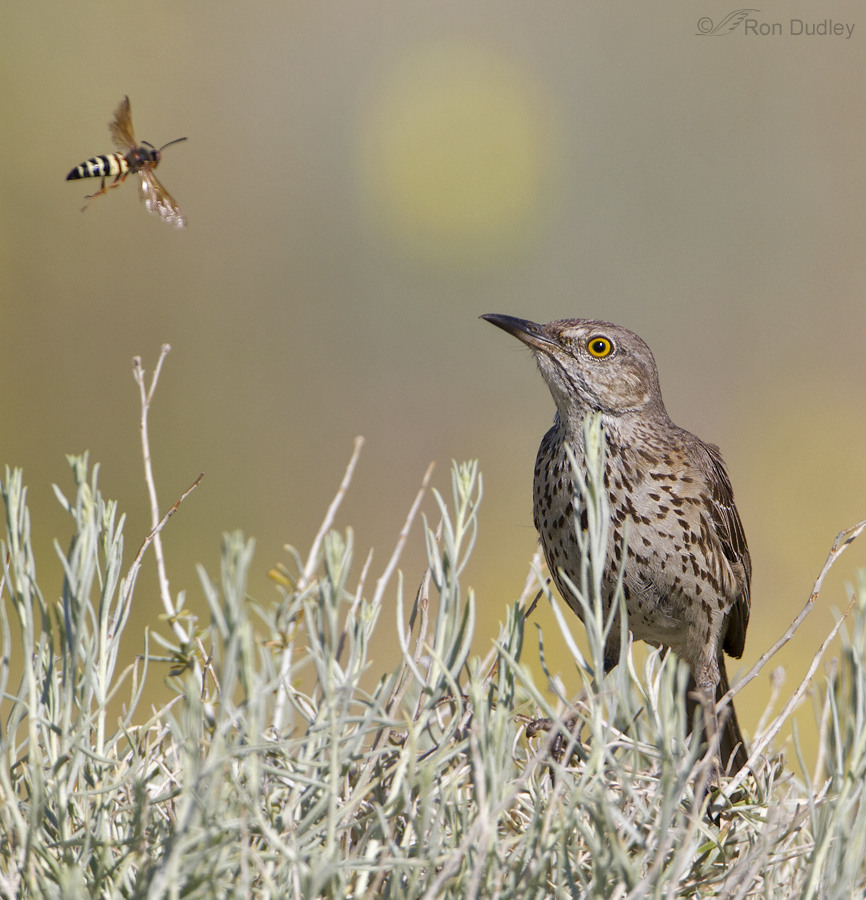Tag: song
Yellow-headed Blackbird Displaying
The Sage Thrasher And The Wasp
Sage Thrasher On Rabbitbrush

Though there’s a fair number of Sage Thrashers on Antelope Island they’ve been a difficult quarry for me. Originally called the Mountain Mockingbird, this smallest of the thrasher species is known to be particularly elusive, frequently running on the ground rather than taking flight and their wandering habits during migration have caused them to be poorly studied.
Meadowlark – Wary At First, Then Singing With Gusto
I tend to like gnarly old sagebrush perches and I’ve had my eye on this one for a while. It’s close to the road, in good light in the morning and Western Meadowlarks use it often. But unlike when they’re perched on an ugly sign, they always seem to fly off as I approach when they’re on this one.
That changed yesterday morning.
My First Western Meadowlark Of The Season
Ok, despite the fact that it’s turning colder again this week I’m now convinced that spring has arrived because two days ago I finally got close enough to photograph a singing Western Meadowlark – my first of the year. 1/2500, f/6.3, ISO 640, 500 f/4, 1.4 tc, natural light I was sure the bird would fly off as I approached, just as all the others have this spring, but this one stuck. I like the somewhat different head angle in this shot. 1/2000, f/6.3, ISO 500, 500 f/4, 1.4 tc, natural light I probably have more trouble with framing this species than any other because their legs are always longer than I think they are when they’re buried in the perch like this and I typically don’t leave enough room for at least one of them. This time I think I did. 1/3200, f/6.3, ISO 640, 500 f/4, 1.4 tc, natural light When the bird would break out in song it truly lifted my spirits, as it always does. They’re just so enthusiastic about it and when you’re close the sound can go right through you – in a good way. I’m always impressed by the size of their mouth which seems to be exaggerated some by that long beak. I suspect there are a few of my regular readers who are unfamiliar with the call of this songster (Elephant’s Child in Australia, for example) so I’ve provided a link to their song if you’d like to hear it (scroll down about half-way). These birds (and their…
Displaying Yellow-headed Blackbird
Welcome to the month of March everyone – for me a psychological barrier between the depths of winter and the promise of spring. It’s supposed to be almost 50 degrees today and that has me thinking of spring birds, warmer temperatures, liquid water and some actual greens in the landscape. By the Ides of March (only two weeks from now) male Yellow-headed Blackbirds will begin arriving in Utah and the females a week or two later. Almost immediately the males will begin their raucous calling as they compete for territories and later for females. This male was defending breeding territory in May. Males display two primary types of song spreads – the Symmetrical Song Spread and the Asymmetrical Song Spread. Each song spread is accompanied by a distinct song type. Here’s a link to one of them. In this sequence of images the male is displaying the Symmetrical Sound Spread where the bird spreads its wings to expose the white patches and the tail is lowered and spread. During this display he localizes with the song called the Accenting Song. Once a display begins it almost seems like the bird loses voluntary control of its actions and the display must be completed before it regains control (my unscientific observation). During part of this display the head is directed upward at 30-45 degrees. This behavior is often difficult for the bird to complete without losing its balance on the typically spindly perches they prefer. The whole thing is quite entertaining to watch. …
Marsh Wrens of Bear River Migratory Bird Refuge
This week I was finally able to get some decent images of Marsh Wrens. Canon 7D, 1/2000, f/8, ISO 400, 500 f/4, 1.4 tc In the past these birds have always been buried too deeply in vegetation for me to get shots I liked but a couple of days ago they finally cooperated with me. Canon 7D, 1/1600, f/8, ISO 400, 500 f/4, 1.4 tc Marsh Wrens have incredibly interesting behaviors. For example, western males must learn up to 200 different songs (eastern birds only learn about 50). Perhaps that’s why these males sing so much – it would take a lot of practice to learn that many “tunes”. Canon 7D, 1/1600, f/8, ISO 400, 500 f/4, 1.4 tc These birds are extremely territorial and aggressive. They are polygynous (males mate with multiple females) and in order to attract females the male builds from 6 to 22 “dummy” nests for every one that is actually used to raise a brood of chicks. We could see several of these nests buried in the cattails along the refuge road. Canon 7D, 1/2500, f/7.1, ISO 400, 500 f/4, 1.4 tc According to the Bear River Blog many of these nests were destroyed by our recent stormy weather and heavy rains so many of these males have had to start over. Canon 7D, 1/2000, f/8, ISO 400, 500 f/4, 1.4 tc Marsh Wrens of both sexes regularly destroy eggs and chicks of other birds near their territories, including those of…




